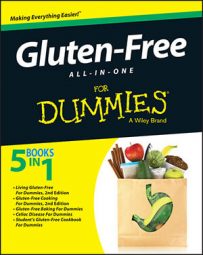Gluten-free yeast breads are a bit different from wheat yeast breads. When substituting flours in these recipes, choose flours with a high protein content for the best structure. Nut flours, such as almond flour or hazelnut flour, are a good choice, and they mimic the nutty taste of wheat flour.
When substituting ingredients, use weight measurements instead of volume measurements.
To make the best gluten-free yeast and other savory breads:
Remember that you don't knead these breads. The "dough" is actually a soft or stiff batter.
If you don't use a scale to measure flours and mixes, always measure by spooning the flour or mix lightly into a measuring cup and leveling off the top with the back of a knife.
Let the dough rise only once. Because the structure is more delicate than wheat-based yeast breads, more than one rise weakens the web of protein and starch, which makes the structure too fragile to hold the air that gives yeast bread its texture.
Always beat the batter for the time specified in the recipe. During this time, the flour absorbs moisture to develop the proteins, and the yeast is fully distributed throughout the bread.
Always check the expiration date on yeast and baking powder before you start a recipe. Expired yeast won't rise, and expired baking powder won't give your breads the height you want.
Check for doneness of savory gluten-free breads with an instant-read thermometer and doneness tests. When breads are done, their internal temperature is 190 to 200 degrees F, and the crust is deep golden-brown. The bread should pull away from the sides of the pan and sound hollow when lightly tapped.

